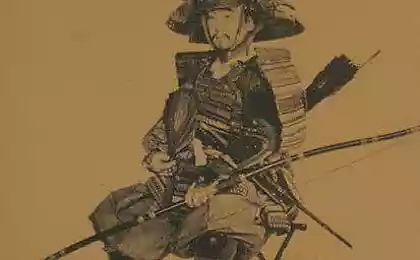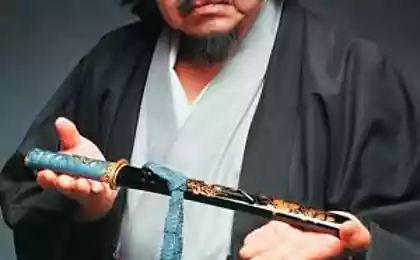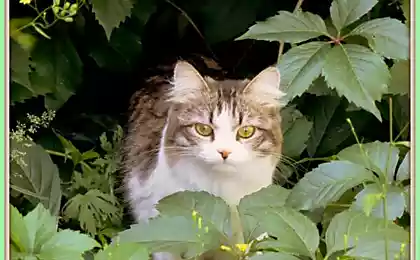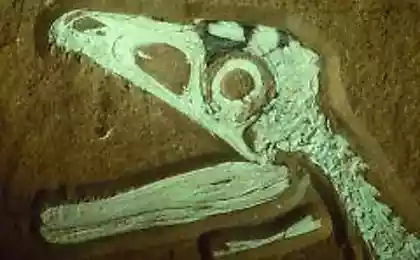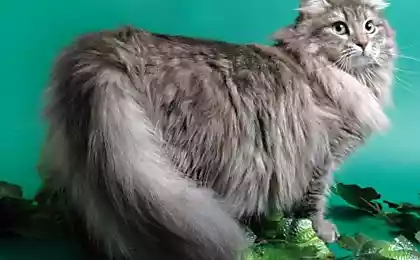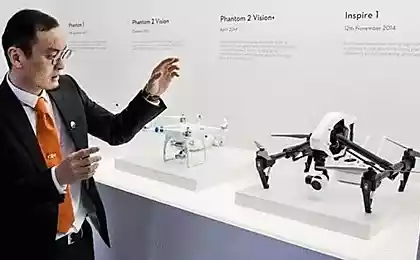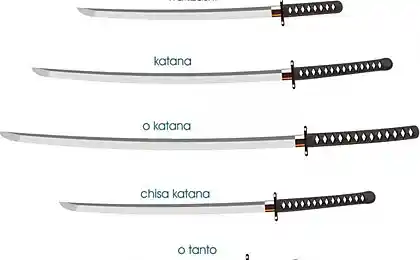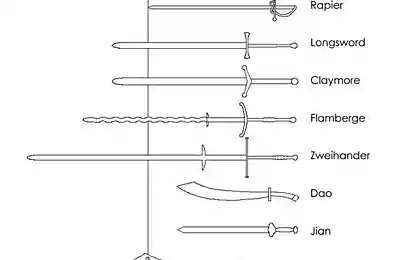3036
Katana with pedigree
Presented katana made great master Kanezumi. He was a gunsmith school Nara Mino tradition, which had a reputation as the master, makes a very sharp swords. The representative of the first generation Kanezumi was the son of a famous master Kanesada, one of the representatives of the Mino tradition to create swords during the era of Boone Muromachi period (until 1449). His name at birth was Dzurazaemon.
21 photo.
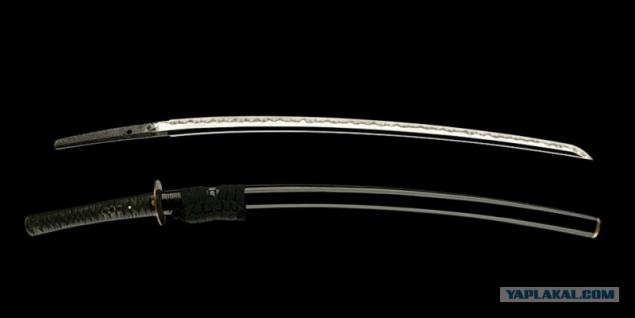
This katana made in about 1558-1570, GG, has a strong wavy jamon (pattern on the blade) Kung midare with a characteristic line.
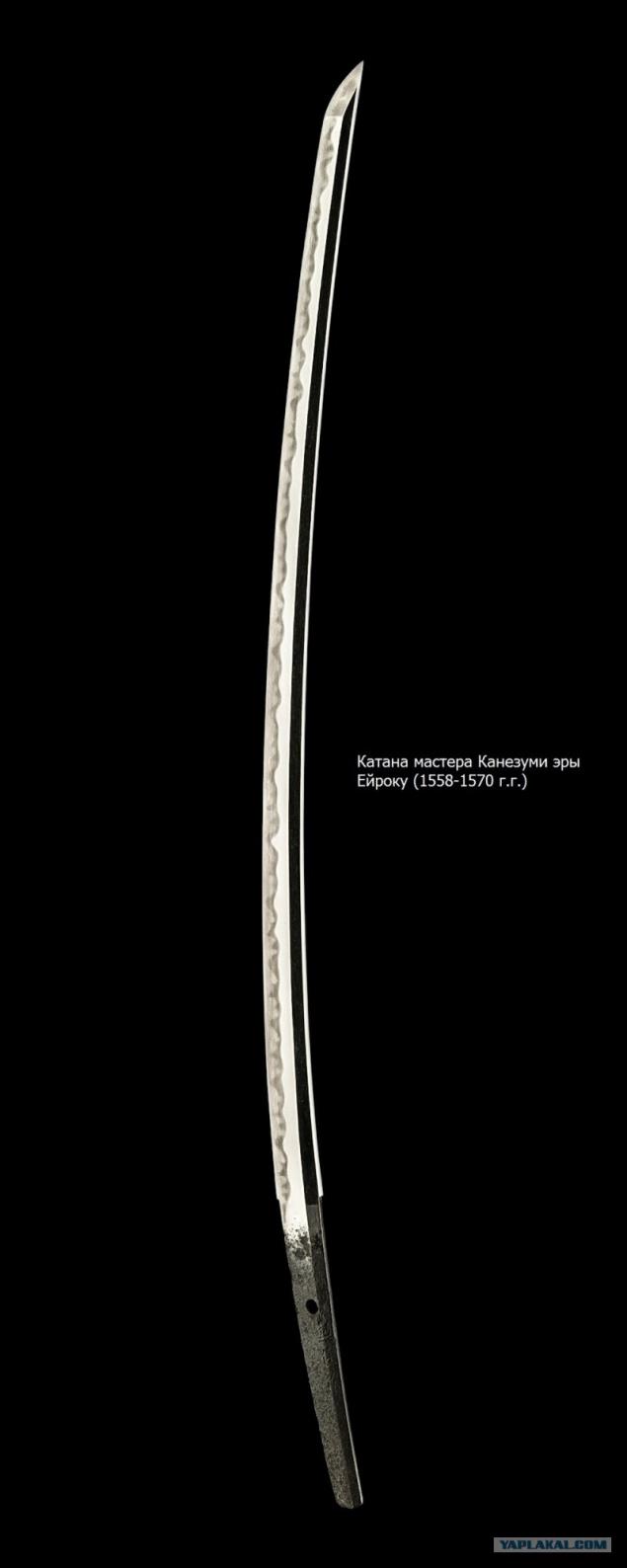
Sori (kurvatura) blade is 2, 1 cm. The length of the katana (always measured along the length of the cutting edge): 67, 3 cm. Place of Origin: Saku.
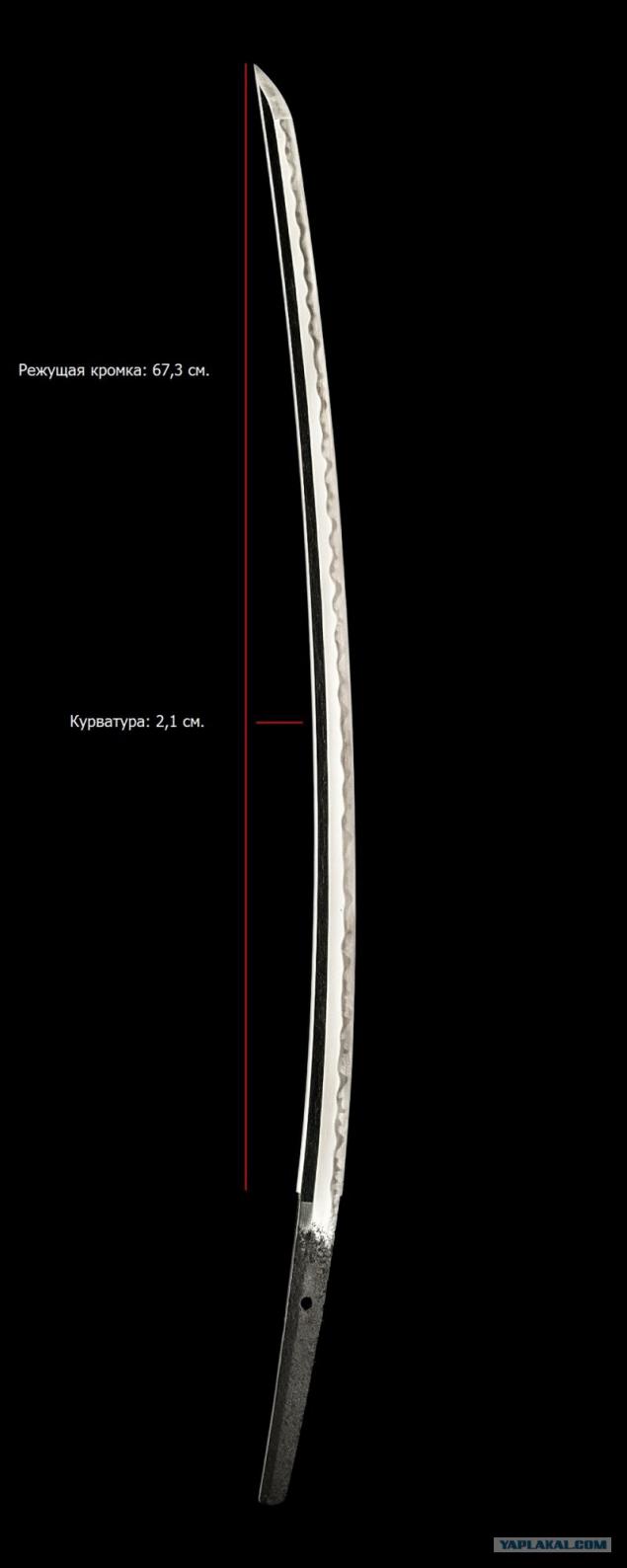
Belongs to the category to something - "old swords" (made up of the XVII century., And are considered the best in Japan). Beautiful Blade - dzihada (Jap. "The body of the sword") has a very high quality surface with dense structure ITAM (Jap. "Grain") with nagare masame (Jap. "Roll steel").
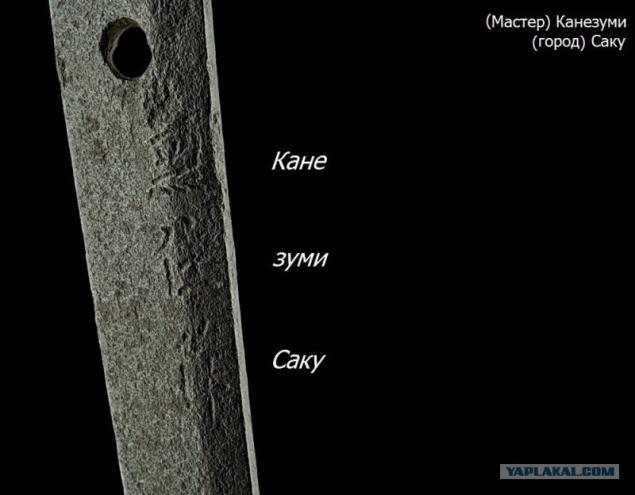
Katana Kanezumi has a characteristic line jamon Kung midare (irregular wave pattern), which is described in Japanese tradition as a combination of mountain tops and labels arrows, or pigeon tails, known as yyahazu-ba.
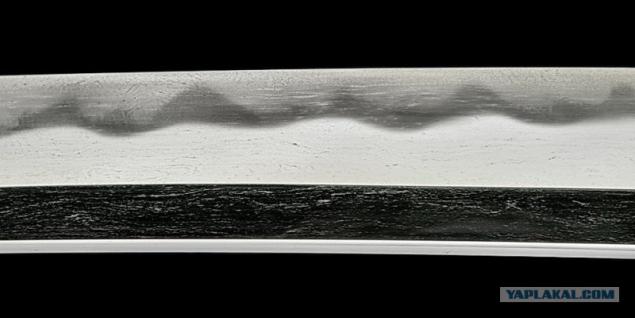
... Wavy jamon on Japanese swords really reminds low Japanese mountains

Last time this katana was polished at the end of the twentieth century. respected polisher from Kamakura in Tokyo
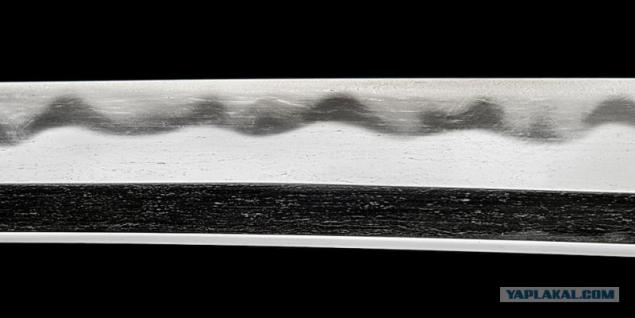
Katana is dressed in a unique and beautiful utsugatana Tendzo kosirae, named Tendzo period (1573-1592 years), in which it was first created for a new sword. Kosirae - all the other elements of traditional Japanese swords and knives (except the blade) - the handle, guard details, scabbard, made in a single decoration.

During the Edo period (1603-1867 years) details kosirae this katana, like all the other old Katan, were replaced by new ones - in the case presented a katana, while maintaining the elegant, dark and elegant style, and many of the original elements of the decor.

...

... Utsugatana - a compound word from: utsu - "blow" and Gata (or katana) - "the sword." Together utsugatana translates as "sword suitable for strikes against the enemy." Utsugatana is an evolutionary step in the development of Japanese swords, originating in the Muromachi period (at the turn of the XV-XVI centuries), when samurai swords are starting to wear the cutting edge up. Such a process is the opposite of wearing swords existed since the X century. the traditional way of wearing swords, cutting edge down.
A new way of wearing swords, cutting edge up, allowed samurai sword snatch of sai (scabbard) and apply the secant, lightning strike at the enemy in one very quick and honed over the years of training movement. Especially this technique was effective during the melee.
Although, it should be noted that the samurai on horseback still continued to use the old way of wearing long swords tachi - the cutting edge down.
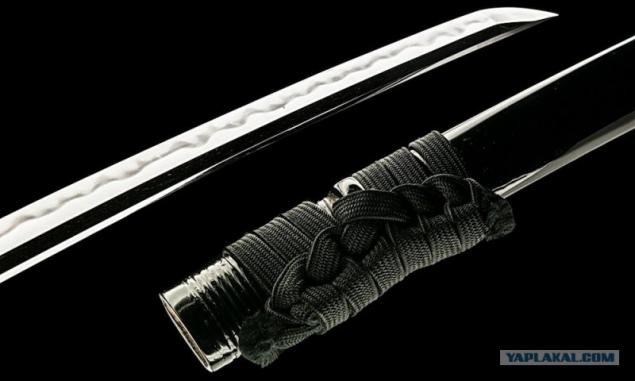
Samurai on a black horse, grabs the tachi. Artist Utagawa Yositora. During the Edo period. Samurai keeps tachi (long sword riders) cutting edge down
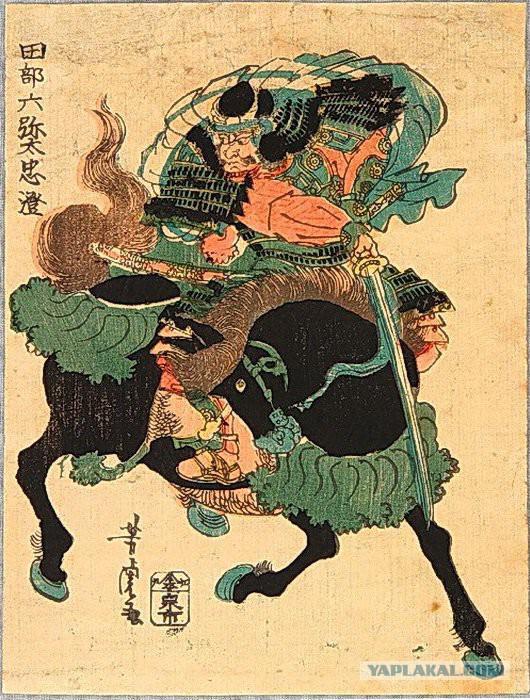
Tuca (Jap. "Handle") is formed in the form of a subtle hourglass and covered with black, lacquered, traditional saekava - stingray skin.

...
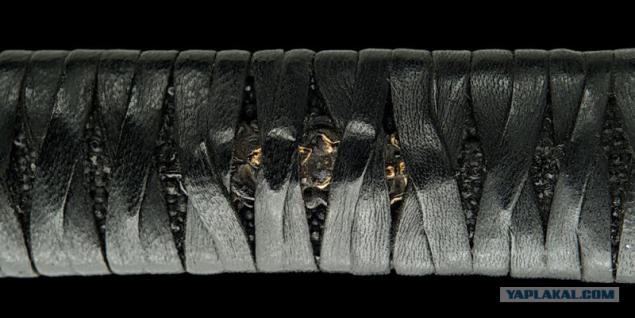
On top of the handle is wrapped in the tsuka-ito - a black leather sheath, which is much rarer than silk.
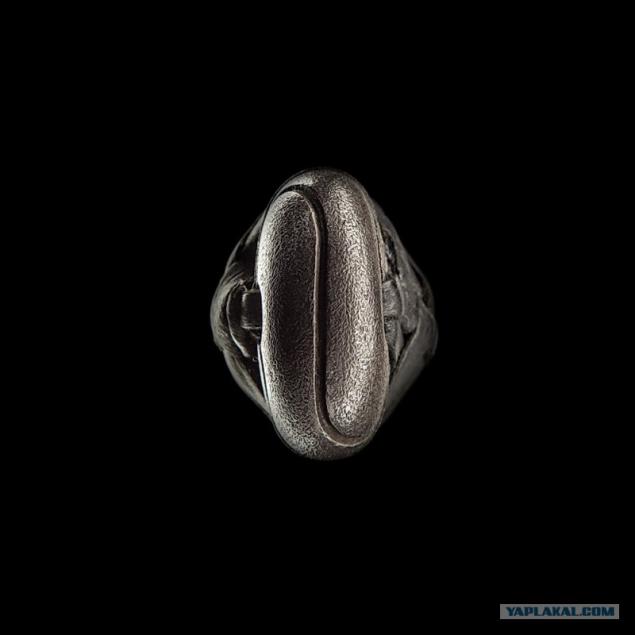
Copper Khabakov (coupling, fastened at the base of the blade to lock the guard) covered tsakudo (high quality Japanese alloy comprising approximately 96% copper and 4% gold).
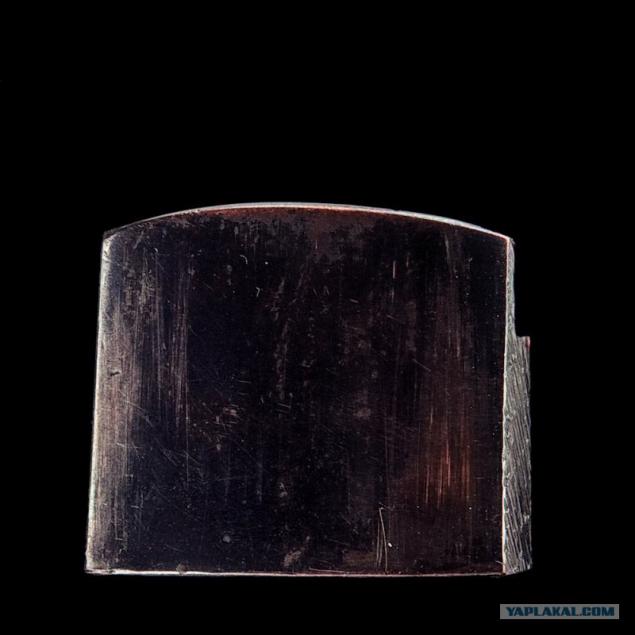
On the metal tsube (Gard) engraved bamboo stems, which the Japanese have considered a symbol of health and longevity.

...

Fuchi (collar between tsuboy and handle) is decorated with kamon (tribal emblem) with flower paulownia kind Toyotomi, founded by Toyotomi Hideyoshi (1536 / 1537-1598 yy) - Daimyo (Jap. "Great name"), a major feudal lord, outstanding military leader and politician Sengoku period. He was one of the three great unifiers of Japan, following along with Tokugawa Ieyasu Nobunaga Oda for.
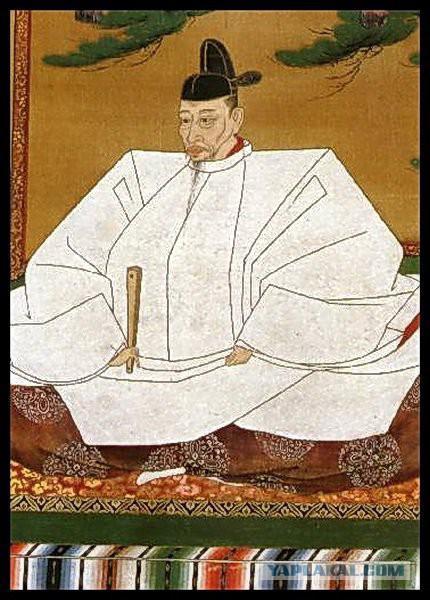
This emblem is a symbol of the two imperial Japan. Consists of three leaves flower paulownia, which are located on top of the three blossoming stem.

Amon daimyo Toyotomi kind
In the time of the rise of Toyotomi Hideyoshi, he included in his kamon this imperial symbol. A Samurai of noble birth was made to decorate their arms, or rather, elements kosirae, family emblem. This katana belongs to the genus Toyotomi since the 80s of the XVI century.
Accurate information about what this katana belonged Toyotomi Hideyoshi, no, but considering the time it was made, the name of the illustrious master Kanezumi and very high cost, we can assume that if it did not belong to Hideyoshi, the owner of the samurai katana was an important kind of Toyotomi - contemporary and associate of the great unifier of Japan.
all ...
Author fimusito
topwar.ru/46998-katana-dayme-roda-t...i-xvi-veka.html

21 photo.

This katana made in about 1558-1570, GG, has a strong wavy jamon (pattern on the blade) Kung midare with a characteristic line.

Sori (kurvatura) blade is 2, 1 cm. The length of the katana (always measured along the length of the cutting edge): 67, 3 cm. Place of Origin: Saku.

Belongs to the category to something - "old swords" (made up of the XVII century., And are considered the best in Japan). Beautiful Blade - dzihada (Jap. "The body of the sword") has a very high quality surface with dense structure ITAM (Jap. "Grain") with nagare masame (Jap. "Roll steel").

Katana Kanezumi has a characteristic line jamon Kung midare (irregular wave pattern), which is described in Japanese tradition as a combination of mountain tops and labels arrows, or pigeon tails, known as yyahazu-ba.

... Wavy jamon on Japanese swords really reminds low Japanese mountains

Last time this katana was polished at the end of the twentieth century. respected polisher from Kamakura in Tokyo

Katana is dressed in a unique and beautiful utsugatana Tendzo kosirae, named Tendzo period (1573-1592 years), in which it was first created for a new sword. Kosirae - all the other elements of traditional Japanese swords and knives (except the blade) - the handle, guard details, scabbard, made in a single decoration.

During the Edo period (1603-1867 years) details kosirae this katana, like all the other old Katan, were replaced by new ones - in the case presented a katana, while maintaining the elegant, dark and elegant style, and many of the original elements of the decor.

...

... Utsugatana - a compound word from: utsu - "blow" and Gata (or katana) - "the sword." Together utsugatana translates as "sword suitable for strikes against the enemy." Utsugatana is an evolutionary step in the development of Japanese swords, originating in the Muromachi period (at the turn of the XV-XVI centuries), when samurai swords are starting to wear the cutting edge up. Such a process is the opposite of wearing swords existed since the X century. the traditional way of wearing swords, cutting edge down.
A new way of wearing swords, cutting edge up, allowed samurai sword snatch of sai (scabbard) and apply the secant, lightning strike at the enemy in one very quick and honed over the years of training movement. Especially this technique was effective during the melee.
Although, it should be noted that the samurai on horseback still continued to use the old way of wearing long swords tachi - the cutting edge down.

Samurai on a black horse, grabs the tachi. Artist Utagawa Yositora. During the Edo period. Samurai keeps tachi (long sword riders) cutting edge down

Tuca (Jap. "Handle") is formed in the form of a subtle hourglass and covered with black, lacquered, traditional saekava - stingray skin.

...

On top of the handle is wrapped in the tsuka-ito - a black leather sheath, which is much rarer than silk.

Copper Khabakov (coupling, fastened at the base of the blade to lock the guard) covered tsakudo (high quality Japanese alloy comprising approximately 96% copper and 4% gold).

On the metal tsube (Gard) engraved bamboo stems, which the Japanese have considered a symbol of health and longevity.

...

Fuchi (collar between tsuboy and handle) is decorated with kamon (tribal emblem) with flower paulownia kind Toyotomi, founded by Toyotomi Hideyoshi (1536 / 1537-1598 yy) - Daimyo (Jap. "Great name"), a major feudal lord, outstanding military leader and politician Sengoku period. He was one of the three great unifiers of Japan, following along with Tokugawa Ieyasu Nobunaga Oda for.

This emblem is a symbol of the two imperial Japan. Consists of three leaves flower paulownia, which are located on top of the three blossoming stem.

Amon daimyo Toyotomi kind
In the time of the rise of Toyotomi Hideyoshi, he included in his kamon this imperial symbol. A Samurai of noble birth was made to decorate their arms, or rather, elements kosirae, family emblem. This katana belongs to the genus Toyotomi since the 80s of the XVI century.
Accurate information about what this katana belonged Toyotomi Hideyoshi, no, but considering the time it was made, the name of the illustrious master Kanezumi and very high cost, we can assume that if it did not belong to Hideyoshi, the owner of the samurai katana was an important kind of Toyotomi - contemporary and associate of the great unifier of Japan.
all ...
Author fimusito
topwar.ru/46998-katana-dayme-roda-t...i-xvi-veka.html



